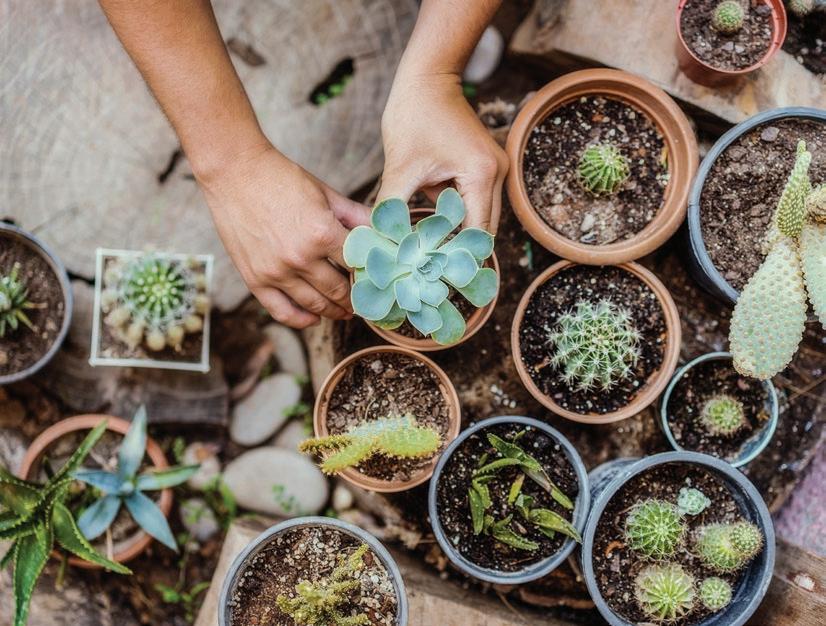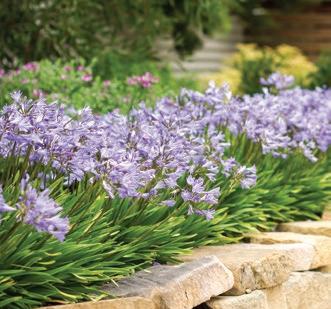
3 minute read
Capsicum
subtropical areas the chilli is grown as a short lived perennial but in colder regions it’s usually grown as an annual with bushes being replaced each year. Want more chilli F l oweri n g cayenne red
plants?
Plants can be easily propagated from seed in Spring and Summer or planted as young plants during the warmer months.

Pests and diseases
Root knot nematode: Chillies belong to the same family as tomatoes, capsicums and eggplants which makes them prone to root knot nematodes. This is usually only a problem in very poor soils. To counteract this, add plenty of organic matter such as compost and manures before planting.
Bacterial spot: Use a copper based spray and avoid overhead watering.
Fruit fl y: Set fruit fl y traps to monitor populations and spray an organic fruit fl y spray if needed. Another option is to use exclusion bags to cover and protect chillies from being stung.
Aphids, scale and thrips: Use a pyrethrum spray, Searles Bug Beater or white oil as a spray applied to foliage to keep these pests at bay.
Blossom end rot: Apply dolomite to the soil before planting, apply mulch and water when needed to ensure soil is consistently moist.
When & where to plant
In Spring or Summer, choose the sunniest part of your vegetable patch to plant capsicums. They require heat to enable their fruit to ripen. Make sure the soil is deep enough to anchor their extensive root system. Do not plant them where other members of the Solanaceae family (eggplants, potatoes, tomatoes) have previously grown. Capsicums are highly ornamental and make ideal container plants providing they are not allowed to dry out, so mulch them well.
How to plant
If growing in containers or sowing directly into the garden bed choose a moisture-retentive vegetable mix such as Searles Herb & Vegetable Specialty Mix to facilitate good root development, and give the bed a long, deep soak of water before planting. Plant seed or seedlings, following the packet or label directions and make sure young seedlings never dry out. If you are growing any of the taller varieties of capsicums, place a stake next to each young plant to support it as it will get heavy when laden with fruit.
How to maintain
Keep the roots cool by covering with a light mulch throughout the warmer months. Ensure the soil is kept constantly moist and weed free. Fertilise fortnightly with SeaMax Fish & Kelp and Searles Flourish Tomato & Vegetable Plant Food right up until fruit set. If growing in containers, increase fertilising to a weekly routine. In mild, frost-free climates, capsicums can be treated as perennial plants, performing best in their second year. Simply cut them back after fruiting has finished in late Autumn and they’ll shoot again the following Spring.
Pests and diseases
Ripening fruit can suffer from sunburn if exposed to sun for prolonged periods and should be hidden among the foliage on very hot days. Few pests and diseases affect capsicums. If fruit fly is a problem, remove affected fruit and install fruit fly traps. Pick the developing fruit as soon as it is ripe enough. Diseases such as spotted wilt and powdery mildew can be minimised by spraying with wettable sulphur. For insect infestations like aphids, mites and thrips, use Searles Ecofend Organic spray.
Harvesting
Capsicums can be picked as soon as they are large enough to be useful. The more you pick them, the more fruits are produced. Remove the fruit with some stalk attached to improve its keeping qualities.









